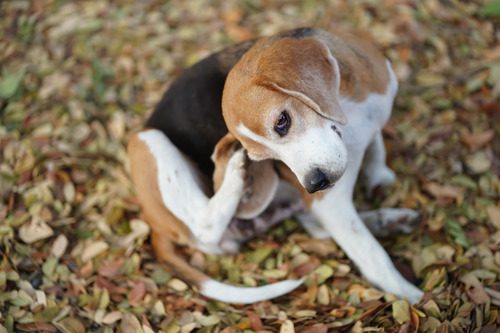The Ultimate Guide to Grooming Your Long-Haired Cat
The Ultimate Guide to Grooming Your Long-Haired Cat
Grooming is a fundamental part of owning a long-haired cat. Cats with long hair require regular grooming to maintain their gorgeous fur and avoid matting and tangling. Adequate grooming also nurtures healthy skin and coats, prevents hairballs, and keeps your cat happy and comfortable. In this ultimate guide, we’ll explore the ideal methods for grooming your long-haired cat.
Types of Coats
The type of hair coats a cat has can vary depending on their breed, genetics, and environment. Here are some of the different types of hair coats that cats might have:
Short Hair Coat
The short-hair coat is the most common type of coat in cats. This coat is glossy, and gleaming, and lies close to the body, providing insulation and warmth. The Siamese, Abyssinian, and Bengal breeds are examples of those with short hair coats.
Medium Hair Coat
A medium hair coat is longer than a short hair coat but not as long as a long hair coat. This type of coat has a plush, fluffy texture and needs only minimal maintenance to prevent matting and tangles. Breeds that commonly have medium hair coats include the American Shorthair, Turkish Van, and Burmese.
Long Hair Coat
A long-hair coat is the longest type of coat in cats, and it requires regular grooming to keep it smooth and shiny. Depending on the breed this sort of coat can be dense, sleek, and flowing. The Persian, Maine Coon, and Ragdoll breeds are examples of those that frequently have long hair coats.
Curly Hair Coat
Although it is uncommon cats can have curly hairs. This type of coat has tight, corkscrew curls that are delicate and whippy to the touch. Curly hair coat breeds include the Devon Rex and Cornish Rex.
Hairless Coat
A hairless coat is a unique coat type that is found in a few breeds of cats. This type of coat is completely devoid of hair, and the skin is exposed to the environment. Hairless cats require special care to keep their skin moisturized and protected. Breeds that commonly have hairless coats include the Sphynx and Peterbald.
Tips for Grooming Long-Haired Cats
Owning a cat with a long coat means more shedding, and more upkeep. Helping these cats with grooming is especially important.
Brushing Your Cat’s Coat
Regular brushing is the keystone of long-haired cat grooming. Daily brushing helps ward off mats and tangles, distributes natural oils, and strips off loose hair. Use a slicker brush or comb with long teeth to gently brush your cat’s fur. Start at the top layer and work your way down to the undercoat. Be careful and refrain from tugging on any knots or twisted hair.
Trimming Your Cat’s Hair
You might need to clip your cat’s hair if it is extremely long to avoid matting and knots. Trim the mat-prone regions first, such as the legs and the area beneath the belly. You may also want to trim your cat’s hair around the anus to avoid feces from adhering to the fur. Consult a groomer or a veterinarian for assistance if you’re unclear on how to clip your cat’s fur.
Bathing Your Cat
Long-haired cats don’t need to be bathed as often as short-haired cats, but they still may need a bath from time to time. Use a cat-specific shampoo and warm water to bathe your cat, taking care to prevent getting water in their ears or eyes. Rinse your cat thoroughly to remove all the shampoo, and then wrap it in a towel to dry. Use a dryer on a low heat setting to dry your cat’s fur quickly.
Cleaning Your Cat’s Ears
Feline pets are more vulnerable to ear contamination, so it’s necessary to wipe their ears repeatedly. Use a soft cloth with a small amount of ear cleaner and gently wipe the inside of their ears. Be cautious not to insert anything into their ear canal, as this can cause damage.
Clipping Your Cat’s Nails
Long hair in cats is also more likely to get matted around their paw pads, so frequently nail trimming is a must. Use cat-specific nail clippers and be extra careful not to cut the quick, which is the vein inside the nail.
Brushing Your Cat’s Teeth
Dental hygiene is just as important for cats as it is for humans. Brush your cat’s teeth regularly with a soft-bristled toothbrush and cat-specific toothpaste. If your cat is resistant to tooth brushing, consider dental treats or toys that can help clean their teeth.
Checking Your Cat’s Skin
Check your cat’s skin for any signs of irritation, redness, or flaking. These can be indications of skin allergies or parasites and should be addressed by a veterinarian.
Grooming Your Cat’s Tail
Cats often have a chunky, hairy tail that requires extra grooming attention. Keep the fur surrounding the base of the tail clean and free of dirt and use a hair comb or brush to gently untangle any knots.
Using Cat-Friendly Grooming Products
When nurturing your long-haired cat, use only cat-specific products that are safe and harmless for your cat’s skin and coat. Avoid using human shampoos or conditioners, as these can cause skin irritation and dryness.
Using Treats to Encourage Good Behavior
Some cats may be reluctant to groom, especially if they’re not used to it. Use treats to encourage good behavior during grooming sessions. Reward your cat with a treat after each productive grooming session, and gradually increase the duration and frequency of grooming sessions over time.

Drawbacks of Long-Haired Coats
There can be several problems caused by long hair if it is not groomed regularly. Here are some of the problems:
Matting
Long hair can easily become wrapped and entwined, which can cause discomfort and even pain for the cat. If left untreated, matting can result in skin infections, hot spots, and even open wounds.
Hairballs
Cats are frequently prone to develop hairballs, which can lead to digestive issues, including vomiting and diarrhea. Regular grooming can help eliminate stray hair and prevent the cat from ingesting excessive amounts of hair.
Skin Infections
Matted hair can trap dust, debris, and bacteria, leading to skin infections. These infections can cause itching, redness, and inflammation, and may require veterinary treatment.
Flea and Tick Infestations
Lengthy hair makes it difficult to spot flea and tick infestations, which can cause skin irritation, anemia, and even the spread of diseases.
Overheating
Long hair can trap heat, especially in warmer weather, causing the cat to become overheated and uncomfortable. Regular grooming can help remove excess hair and keep the cat’s coat cool and comfortable.
What to Avoid While Grooming Your Cat
Grooming a long-haired cat requires patience, care, and attention to detail. Here are some things to avoid during grooming to prevent discomfort or injury to the cat:
Pulling or Tugging on the Hair
Pulling or tugging on the cat’s hair can hurt and make the pet uncomfortable, mainly if the hair is tangled or matted. Be gentle and patient when brushing or combing the cat’s hair and avoid pulling or tugging on any knots or mats.
Using Harsh Chemicals
Avoid using harsh chemicals or shampoos that can dry out the cat’s skin or irritate the eyes and ears. Choose a mild, cat-specific shampoo and rinse the cat thoroughly to avoid any residual chemicals on the coat.
Cutting Too Much Hair
While trimming the cat’s hair can prevent matting and tangles, avoid cutting too much hair, as this can expose the cat’s skin to sunburn or cold weather. Trim only the necessary areas, such as the anus, legs, and paw pads, and be careful not to cut the skin.
Overhandling or Restraining the Cat
Overhandling or restraining the cat during grooming can cause stress and discomfort. Allow the cat to move freely and take breaks if necessary to prevent stress or anxiety.
Conclusion
Grooming your long-haired cat is an essential aspect of their overall health and well-being. Regular brushing, trimming, bathing, ear cleaning, nail trimming, teeth brushing, skin checking, and tail grooming are all important practices to keep your feline friend healthy and happy. If you’re unsure about any aspect of grooming your long-haired cat, seek professional help from a groomer or veterinarian. By following these guidelines, you can ensure that your long-haired cat stays healthy, happy, and beautiful for years to come.
If you are located near Cooper City, FL and looking for a veterinarian to see your long-haired cat, Embassy Lakes Animal Hospital is here to help. Our expert veterinarians can be reached at (954) 432-5811, or you can Request an Appointment Online.
Share This Article
Related Articles
About Embassy Lakes Animal Hospital
Located in Cooper City, FL, we strive to do more than simply be a full-service veterinarian for your pet. Our decades of experience has served generations of families and their beloved pets and we look forward to serving you as well!



